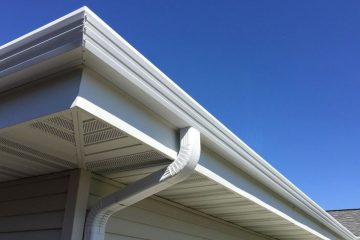The roofing industry is undergoing a transformation, driven by advancements in technology, a growing emphasis on sustainability, and the need for enhanced durability and aesthetics.
Homeowners and builders alike are exploring innovative residential roofing solutions that offer improved performance, energy efficiency, and environmental benefits.
This article delves into the latest trends and technologies shaping the future of residential roofing.
Introduction
Roofing is an essential component of any home, providing protection from the elements and contributing significantly to a building’s overall aesthetics and energy efficiency. Traditional roofing materials such as asphalt shingles, clay tiles, and wood shakes have been widely used for decades.
However, recent technological advancements and growing environmental concerns are paving the way for new and improved roofing solutions. This article explores the most innovative residential roofing services and technologies that are gaining popularity and shaping the future of the industry.
Sustainable Roofing Materials
Solar Roofing
Solar roofing, also known as photovoltaic (PV) roofing, integrates solar panels directly into the roofing material. This innovative approach allows homeowners to generate electricity from their rooftops without the need for bulky and unattractive solar panels. Solar roofing tiles and shingles are designed to blend seamlessly with traditional roofing materials, providing a sleek and modern look.
Benefits of Solar Roofing
- Energy Efficiency: Solar roofing generates clean, renewable energy, reducing reliance on fossil fuels and lowering electricity bills.
- Aesthetic Appeal: Unlike traditional solar panels, solar roofing materials are designed to mimic the appearance of standard roofing materials, enhancing the home’s curb appeal.
- Increased Property Value: Homes with solar roofing are often valued higher due to their energy efficiency and sustainability features.
Cool Roofing
Cool roofing materials are designed to reflect more sunlight and absorb less heat than standard roofing materials. This can help reduce cooling costs, improve indoor comfort, and decrease the urban heat island effect.
Types of Cool Roofing Materials
- Cool Shingles: These are asphalt shingles coated with reflective granules that help reduce heat absorption.
- Metal Roofing: Metal roofs can be coated with reflective paint or coatings to enhance their solar reflectance.
- Tile Roofing: Certain types of tiles, such as clay or concrete, can be manufactured with reflective properties.
Benefits of Cool Roofing
- Energy Savings: By reflecting more sunlight, cool roofs reduce the need for air conditioning, leading to lower energy bills.
- Extended Roof Life: Reduced heat absorption can decrease the thermal stress on roofing materials, extending their lifespan.
- Environmental Impact: Cool roofs can help mitigate the urban heat island effect, improving air quality and reducing greenhouse gas emissions.
Green Roofing
Green roofs, also known as living roofs, are covered with vegetation and soil, providing numerous environmental and economic benefits. They can be either extensive (lightweight, with shallow soil and low-maintenance plants) or intensive (heavier, with deeper soil and a wider variety of plants).
Benefits of Green Roofing
- Thermal Insulation: Green roofs provide natural insulation, reducing heating and cooling costs.
- Stormwater Management: Vegetation absorbs rainwater, reducing runoff and mitigating the risk of flooding.
- Biodiversity: Green roofs create habitats for birds, insects, and other wildlife, promoting urban biodiversity.
- Air Quality: Plants on green roofs can improve air quality by absorbing pollutants and producing oxygen.
Advanced Roofing Technologies
Smart Roofing Systems
Smart roofing systems incorporate advanced technologies such as sensors, automation, and IoT (Internet of Things) to enhance the functionality and performance of roofs. These systems can monitor various parameters, including temperature, humidity, and structural integrity, providing real-time data and alerts to homeowners.
Benefits of Smart Roofing Systems
- Preventive Maintenance: Sensors can detect issues like leaks or structural damage early, allowing for timely repairs and preventing costly damage.
- Energy Management: Smart roofing systems can optimize energy usage by adjusting insulation or ventilation based on real-time conditions.
- Enhanced Safety: Automated systems can respond to environmental changes, such as opening vents to reduce heat buildup or closing them to prevent water ingress during storms.
Reflective and Insulated Roofing Materials
Reflective and insulated roofing materials are designed to improve energy efficiency by reducing heat transfer and enhancing insulation. These materials are particularly beneficial in regions with extreme temperatures.
Types of Reflective and Insulated Roofing Materials
- Reflective Coatings: These coatings can be applied to various roofing materials to enhance their solar reflectance.
- Insulated Panels: These panels consist of a core of insulating material, such as foam, sandwiched between layers of roofing material.
Benefits of Reflective and Insulated Roofing Materials
- Energy Efficiency: Improved insulation and reflectivity reduce the need for heating and cooling, leading to lower energy bills.
- Comfort: Enhanced insulation helps maintain a consistent indoor temperature, improving comfort for occupants.
- Durability: Insulated panels can provide additional structural support and protection against environmental stressors.
3D-Printed Roofing Materials
3D printing technology is revolutionizing the construction industry, including roofing. 3D-printed roofing materials can be customized to fit specific design requirements and offer a range of benefits, including reduced waste, faster construction times, and innovative designs.
Benefits of 3D-Printed Roofing Materials
- Customization: 3D printing allows for the creation of unique and complex designs that would be difficult or impossible to achieve with traditional methods.
- Efficiency: 3D printing can significantly reduce construction time and material waste, making it a more sustainable option.
- Strength and Durability: 3D-printed materials can be engineered to provide enhanced strength and durability, offering long-lasting roofing solutions.
Emerging Trends in Residential Roofing
Integration of Renewable Energy Sources
The integration of renewable energy sources into roofing systems is a growing trend. Beyond solar roofing, other renewable technologies such as wind turbines and solar thermal collectors are being incorporated into residential roofs to further enhance energy efficiency and sustainability.
Benefits of Integrated Renewable Energy Sources
- Energy Independence: Homeowners can generate a significant portion of their energy needs, reducing reliance on the grid.
- Environmental Impact: Utilizing renewable energy sources reduces greenhouse gas emissions and promotes environmental sustainability.
- Cost Savings: Over time, renewable energy systems can lead to substantial savings on energy bills.
Advanced Roofing Designs
Modern roofing designs are increasingly focusing on both functionality and aesthetics. Innovative architectural styles and advanced materials are being used to create roofs that not only protect but also enhance the overall look of the home.
Examples of Advanced Roofing Designs
- Curved and Sloped Roofs: These designs can provide better drainage, improve aerodynamics, and offer a unique visual appeal.
- Mixed Material Roofs: Combining different materials, such as metal, wood, and glass, can create a distinctive and modern look.
- Roof Gardens and Terraces: Utilizing roof space for gardens or terraces can provide additional living space and contribute to sustainability.
Modular and Prefabricated Roofing Systems
Modular and prefabricated roofing systems are gaining popularity due to their efficiency and ease of installation. These systems are manufactured off-site and then assembled on-site, reducing construction time and minimizing disruption.
Benefits of Modular and Prefabricated Roofing Systems
- Speed: Prefabricated components can be quickly assembled, reducing construction time.
- Quality Control: Manufacturing in a controlled environment ensures high-quality standards and precision.
- Cost-Effective: Reduced labor and construction time can lead to cost savings for homeowners.
Conclusion
The roofing industry is witnessing a wave of innovation, driven by advancements in technology, a focus on sustainability, and evolving architectural trends. From solar and cool roofing to smart systems and 3D-printed materials, the future of residential roofing promises to be more energy-efficient, environmentally friendly, and aesthetically pleasing. As homeowners and builders embrace these innovative solutions, the potential for creating more sustainable, durable, and attractive homes is greater than ever.
Incorporating these cutting-edge roofing solutions not only enhances the functionality and appearance of homes but also contributes to a more sustainable and energy-efficient future. As the industry continues to evolve, staying informed about the latest trends and technologies in residential roofing will be essential for homeowners, builders, and architects alike.



